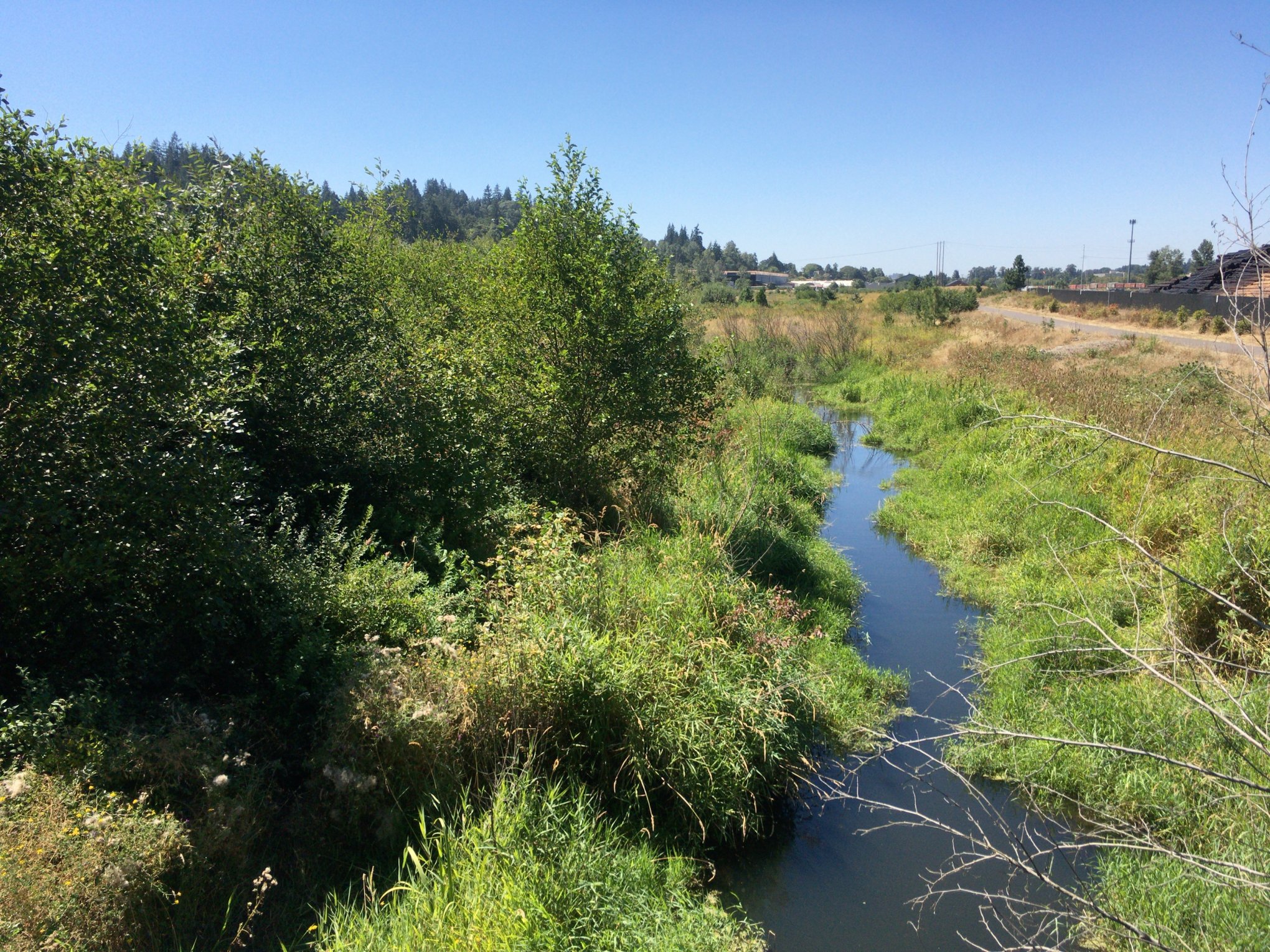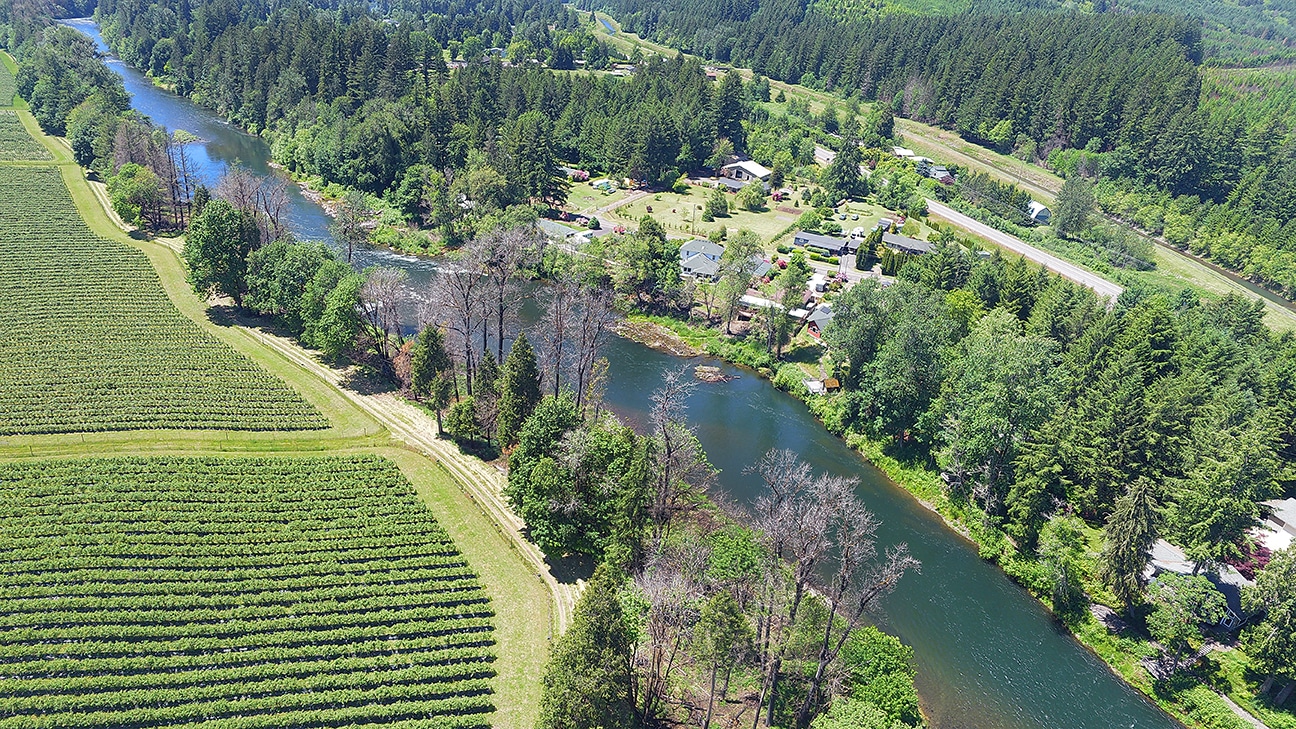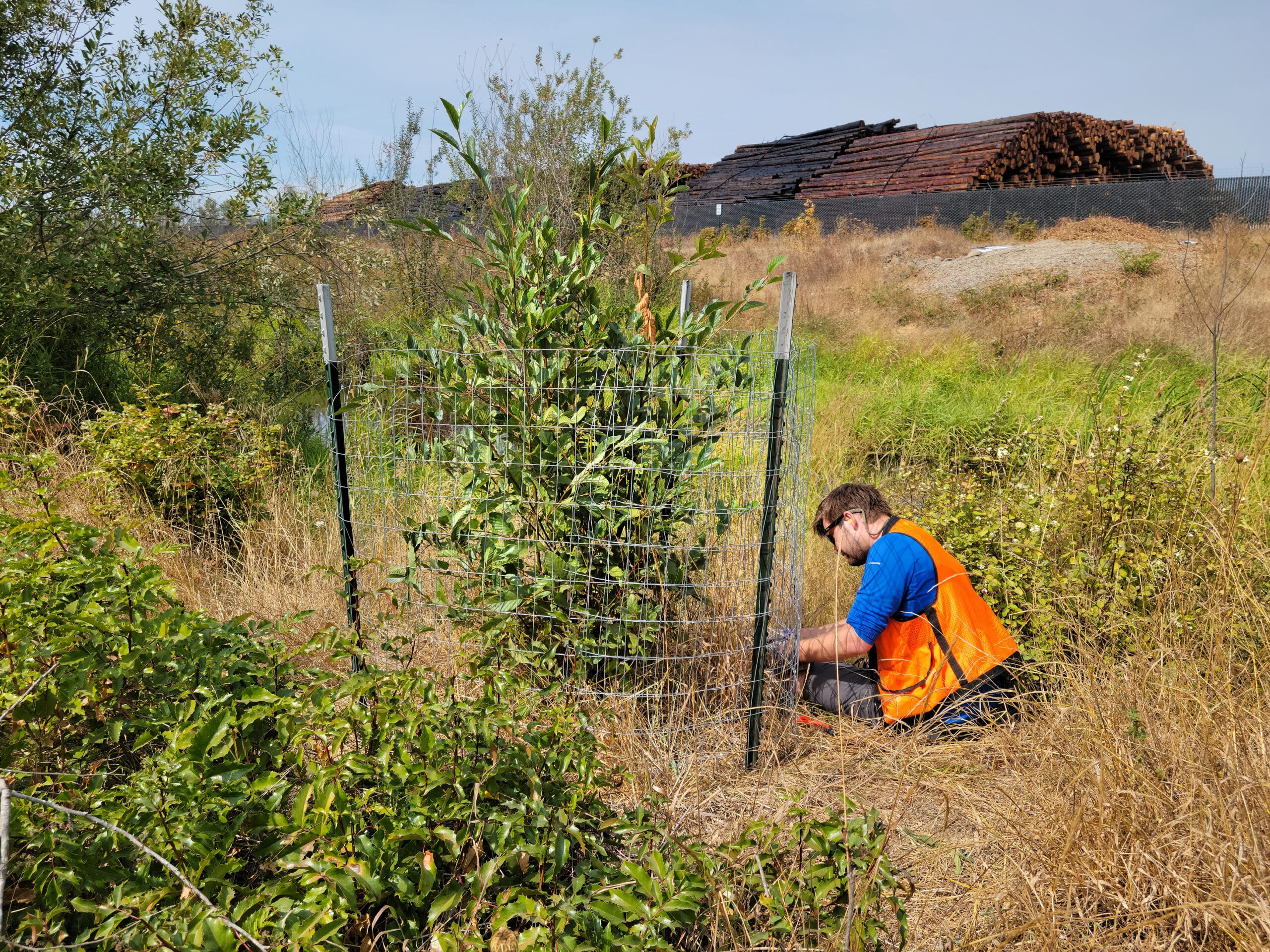Upper Willamette River Basin
MISSION OF THE BASIN: Collaboratively work with stakeholders to improve water quality and streamside forests.
The upper Willamette River basin is an economic engine encircled by floodplain forests. As the home of our third water quality trading program in Oregon, the upper Willamette also presents an opportunity to keep pace with climate change and warming water temperatures.
Taking what we’ve learned from our other compliance programs, The Freshwater Trust (TFT) has built more natural resilience into each planting project, including wider streamside buffers to combat erosion and greater plant density to ensure survival.
The success of restoration programs also depends on a great set of local partners. We’re fortunate to work with knowledgeable practitioners whose dedication to preserving ecosystems is as strong as ours. Our partners helped us swiftly recruit four streamside revegetation projects in 2023 and 2024. This approach—combining our knowledge of process, analytics, and program- building with the place-based expertise of local partners—demonstrates a viable method to scale up and fix more rivers faster.
Since most of the best land for creating new shade over the river is in private hands, our partnerships with private landowners are key to making a strong, positive impact that benefits the entire watershed. TFT and our local restoration partners commit to investing in forests alongside private landowners who commit to leaving an important legacy for the river. Public landowners, such as municipalities and parks commissions, are equally excited to participate. Here, streamside revegetation efforts on large parcels of public land are designed to work with current recreation uses and complement other restoration work done on the sites. The combined effect creates a more connected, more resilient natural landscape, greater than the sum of its parts.





